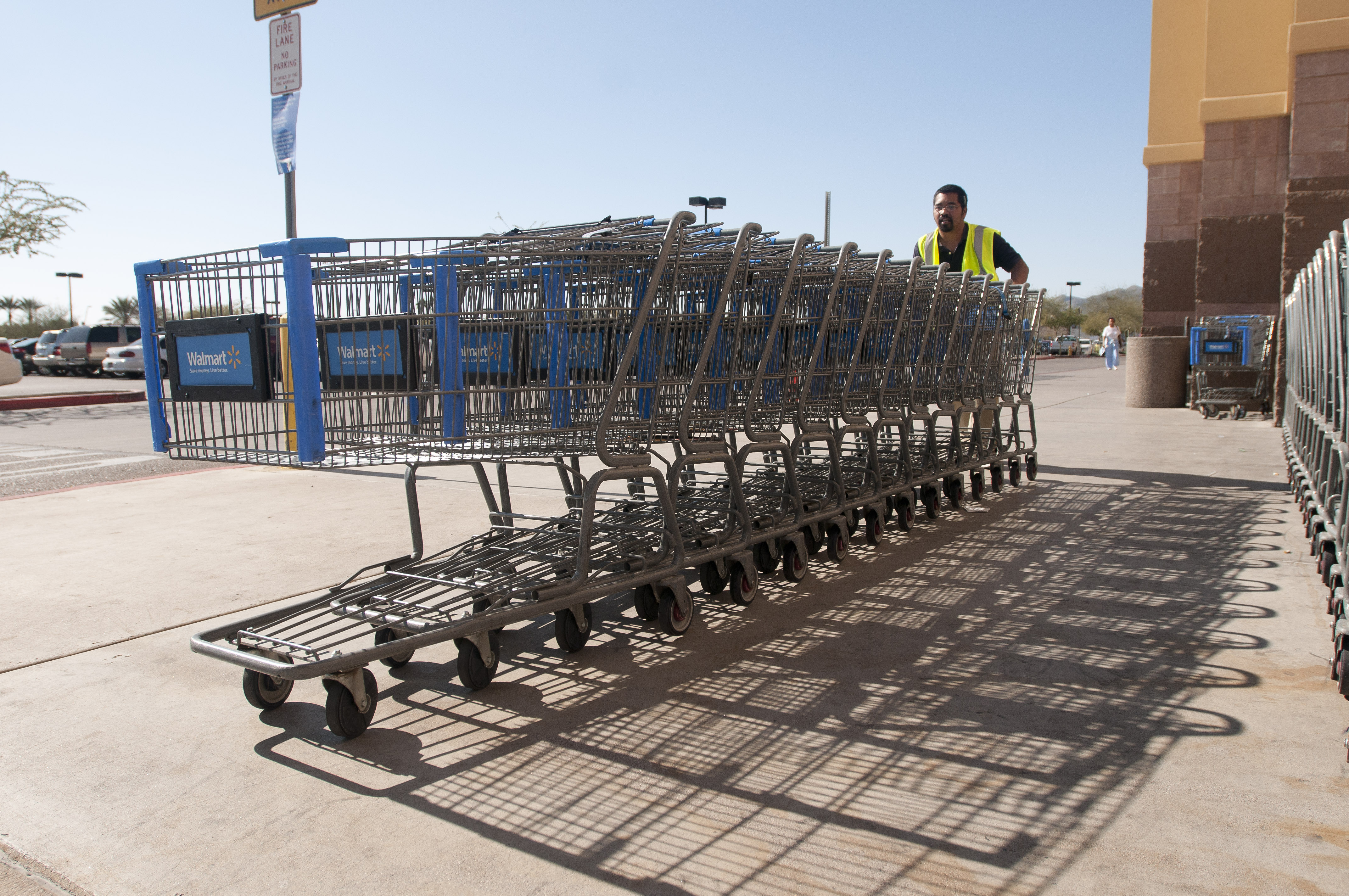Walmart would like to remind the world that Amazon hasn't won the battle for the future of grocery. And that it might not even be in pole position. The retail giant just posted its highest food sales in five years, while building out its online grocery delivery operations to go toe-to-toe with an increasingly physical (brick-and-mortar) Amazon
In terms of brick-and-mortar grocery, and retail in general, Walmart is already winning over Amazon, of course. It is the largest brick-and-mortar retailer in the world, there is a Walmart within ten miles of 90% of Americans, and they are already the nations' grocery leader, with $200 billion in sales, roughly 55% of their total.
And while they aggressively cultivate their reputation for offering the lowest prices in the business --they aim to offer the lowest price on 80% of sales--they are also targeting more affluent, urban shoppers (read:existing Prime Customers) with organic produce, expanded fashion offerings, and grocery delivery.
Like Damming the Amazon
Amazon will not give up those customers without a fight, and a physical fight at that. While Walmart tries to level up the digital, Amazon is going to be stepping up the physical. Indeed, they want to establish more brick-and-mortar locations, particularly when it comes to grocery, and with good reason: as our 2017 Grocery Market Research Report observed, customers are weary of perishable food deliveries when they don't come from familiar sources. Thus Amazon's move on Whole Foods, an effort that we previously described as an attempt to get its Prime Customers on their grocery delivery gravy train. Simply put, selling perishables requires a close proximity between buyer and seller--these are not shelf stable items that can linger until they sell like shower curtain liners, or if they ever sell like Denver Bronco hats.
Of course, Amazon doesn't lightly tread into anything; they will not merely be stepping into the in-store grocery shopping experience, they will be seeking to revolutionize it. With checkout-free, in-store shopping allegedly on the horizon, a drive-thru store concept in development, and untold secret projects no doubt involving everything from robots and drones to trained monkeys and that Star Trek replicator thing, there's no saying where Amazon will take grocery shopping, or who will follow them there.
For Walmart to match these efforts, it must expand its online prowess, and not just in grocery. If Walmart is to move into affluent, urban markets currently dominated by Amazon Prime, it will have to shed its cut-rate, rural, and conservative reputation among those consumers. One way to increase your cache is to buy some, and buy it has. In addition to its highly public acquisition of Jet.com, the retail giant has snatched up some trendy fashion brands and sellers such as Bonobs, ModCloth, MooseJaw. This, overtime, could change shoppers' perception of Walmart and make them a viable alternative for existing Prime customers.
Walmart isn't copying Amazon's blueprint as it moves into the digital--to do so would be to ignore the one great advantage Walmart has over everybody else: its sheer ubiquity and size (Side note: whoever said size doesn't matter was clearly not trying to dominate online grocery). Having a store near nearly everybody helps with things like supply chain, delivery, and pickup, and is in of itself a reminder of your omnipresence.
This advantage has also led to some out-of-the-box thinking. For example, Walmart is experimenting with store employees making deliveries on their way home from work, an efficiency unavailable to Amazon, which has giant distribution centers in certain cities. To save further on delivery costs, Walmart also offers customers discounts on items they order online and pick up in store, again reasoning that they have a store near enough nearly everybody. Their online expansion has already paid off: their e-commerce business is up by 60% over the last year.
Starting with the Man in the Mirror
It is worth noting that these two companies are starting to look rather similar. That's what happens when the leading e-commerce giant tries to get more physical while the leading brick-and-mortar retailer tries to expand its e-commerce. Their market research no doubt tells them that omnichannel the ultimate goal. The retailers are fighting to be consumers' first option for whatever they want, wherever they are. And they want to be able to get it to them quickly.
Thus, Walmart is trying to get more digital, agile with delivery, and hopefully upscale. Amazon wants to be more physical, and wants to expand into perishables.. It is appropriate (not Ironic) that each has what the other needs to expand their existing services to both meet and shape the future grocery marketplace
If only these two crazy kids could just get married and get it over with.


